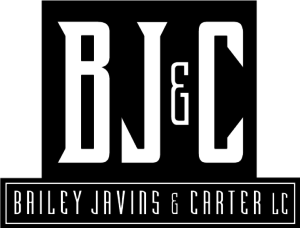5 Common Chemical Exposure Workplace Injuries
Throughout our everyday lives, we run the risk of coming in contact with harmful substances. We may be exposed to toxic chemicals due of mold or lead paint in our homes, contamination in the water we drink, and very often, dangerous toxins in the air we breathe.
Another place where individuals are frequently exposed to dangerous chemicals is in the workplace. Toxic chemical exposure can happen in virtually any workplace setting, but there are some industries in which workers are more susceptible to this hazard. These include:
- Industrial & Manufacturing
- Mining
- Warehousing
- Transportation
- Oil and Gas
- Construction
- Railroad
- Welding
- Lumber
- Agriculture
- Healthcare
Many of the chemicals and other substances used frequently in these and other industries present a high risk of serious injury or death if workers are heavily exposed to them over an extended period of time. And although the Occupational Safety and Health Administration (OSHA) has very strict standards to prevent this from happening, injuries from toxic chemical exposure still occur regularly in workplaces in West Virginia and throughout United States. This is mostly due to negligence or in some cases even willful actions on the part of employers.
The Centers for Disease Control and Prevention (CDC) identifies the five most common substances that cause chemical exposure injuries at work. The vast majority of chemical injuries in the workplace result from exposure to one of these five toxic substances:
Carbon Monoxide
Carbon monoxide (CO) is an odorless and colorless gas that is very difficult to detect and poses a major risk to workers in every industry. CO is produced every time a fossil fuel is burned, and those who are exposed to it in indoor and enclosed spaces can experience sudden illness or death. Common symptoms of CO exposure include headaches, dizziness, nausea, vomiting, chest pain, confusion, and general weakness, and high-level exposure can lead to loss of consciousness and eventual death. Because most equipment and machinery in the workplace requires fossil fuels, millions of workers are at risk of carbon monoxide poisoning.
Ammonia
Ammonia is also a colorless gas, but it does have a distinct odor that is familiar to many people, making it easier to detect than carbon monoxide. Exposure to ammonia can cause irritation and severe burns on the skin, and also in the eyes, mouth, throat, and lungs. Higher levels of ammonia exposure can result in death. Ammonia is commonly used in agriculture as an ingredient in fertilizer, and in food manufacturing as a refrigerant, and a large percentage of chemical exposure workplace injuries (resulting from this substance) happen in these two industries.
Chlorine
Chlorine is a diverse substance that is used as an ingredient in thousands of industrial products. Chlorine is heavier than regular air, and it tends to accumulate at the bottom of areas that have poor ventilation. Chlorine is widely used in the paper and print manufacturing industries, as well as in entertainment and recreation as a substance placed in swimming pools and water parks. Lower level exposure to chlorine can cause irritation in the eyes, nose, and throat, and higher levels of exposure can cause coughing, difficulty breathing, chest pains, vomiting, and death.
Hydrochloric Acid
Hydrochloride acid is a clear, colorless and highly corrosive substance that derives from hydrogen chloride in water. Hydrochloric acid is widely used in the manufacturing of fertilizers, dyes, rubber, and several other products. Exposure to unsafe levels of hydrochloride acid can cause permanent damage to the eyes, skin, respiratory organs, and intestines. The corrosive nature of the substance can also cause severe chemical burns when it comes in direct contact with the skin.
Sulfuric Acid
Sulfuric acid is another highly corrosive substance that is clear, colorless, and oily. Also known as battery acid, sulfuric acid is widely used in many industries, most commonly as an essential ingredient in fertilizer and as an integral part of the petroleum refining process. When sulfuric acid comes in contact with the skin, it can cause severe chemical and thermal burns. When it comes in contact with the eyes, it can cause blindness.
Suffered a Chemical Exposure Injury in the Workplace? Contact an Experienced Attorney to Discuss your Legal Options
If you or someone close to you suffered a workplace injury due to chemical exposure or any other cause, you need strong legal counsel in your corner advocating aggressively for your rights and interests. West Virginia workplace injury cases are highly complicated, because there are several potential legal avenues that may be available. For example, your injury may be covered by workers’ compensation, but you also may be able to file a personal injury lawsuit if it was caused by a party other than your employer. In some rare cases, you may even be able to bring a personal injury action against your employer if it can be shown that your injury was caused by deliberate intent on their part.
To determine the right steps for your case, it is best to work with a seasoned attorney who thoroughly understands these areas of the law and has a successful track record with workplace injury actions. At Bailey, Javins, and Carter L.C., we have been standing up for the rights of West Virginia workers for over four decades. We have handled countless claims for chemical exposure injuries and all other types of injuries in the workplace, and we fight hard to recover every dollar of compensation our clients are entitled to.
Call our office today at (800) 497-0234 or (800) 296-6979 or message us through our online contact form to schedule a free consultation with one of our attorneys.




